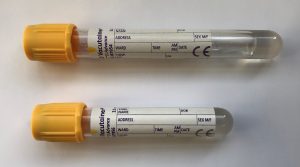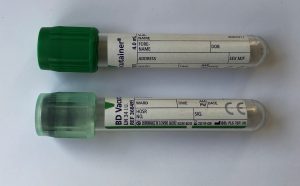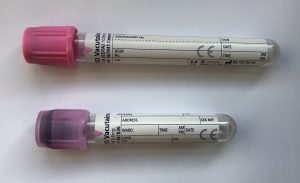Serum or Plasma (EDTA or Lithium Heparin)



mg/L
Ethyl alcohol is a central nervous system depressant and an anesthetic. Alcohol ingestion may cause loss of judgment, incoordination, and disorientation. Higher doses may induce stupor possibly followed by coma and death.
| Blood Alcohol Concentration | Clinical Signs & Symptoms |
| <800 mg/L | UK legal drink-driving limit |
| 500-1000 mg/L | Decreased reaction time, diminished judgement, fine motor incoordination |
| 1000-2000 mg/L | Blurred vision, aggression, disorientation, confusion, ataxia, vasodilation, stupor, vomiting, sweating |
| 2000-4500 mg/L | Marked incoordination, coma, hypothermia, hypoglycaemia and potential convulsions |
| >4500 mg/L | Respiratory depression, hypotension, loss of protective airway reflexes (risk of aspiration), hypothermia, incontinence, coma, hypoglycaemia and convulsions. Potentially fatal. |
Ethyl alcohol is absorbed rapidly in the proximal small intestine, usually within 30 to 90 minutes after ingestion. More than 90% of ethanol is metabolized by hepatic microsomal mixed function oxidases to acetaldehyde and acetic acid. The primary enzyme, alcohol dehydrogenase, is concentrated in the liver, but smaller concentrations are found in the gastric mucosa. Women may have less gastric alcohol dehydrogenase activity than men, explaining their increased bioavailability and higher peak ethanol levels.
Aspirin and histamine-2 blockers may inhibit gastric alcohol dehydrogenase activity, causing slightly elevated blood ethanol levels. Other drugs that are metabolized by the hepatic microsomal system such as phenobarbital increase the effect of ethyl alcohol.
Isopropyl alcohol may interfere with this method, giving falsely elevated values. Isopropyl alcohol has a stronger intoxicating effect than ethyl alcohol and should be suspected when a patient appears very intoxicated and his blood alcohol is low (below 1000 mg/L). Methanol and acetone do not cause significant interference. Because ethanol preferentially partitions into the aqueous rather than the cellular phase of blood, higher levels are obtained with serum or plasma. Serum and plasma levels average 1.09 to 1.18 times higher than whole blood levels. The concentration of ethanol in arterial and capillary blood is about 25% higher than venous blood after initial consumption of alcohol.
This test is satisfactory for medical, but not legal use.
Do not use alcohol or other volatile disinfectants at the site of venepuncture. Aqueous Zephiran (benzalkonium chloride), aqueous Merthiolate (thimerosal), or povidone-iodine may be used.
Local test
1 day Cannot be added on to an existing request >4 hours old.
Specimen Labelling Procedure